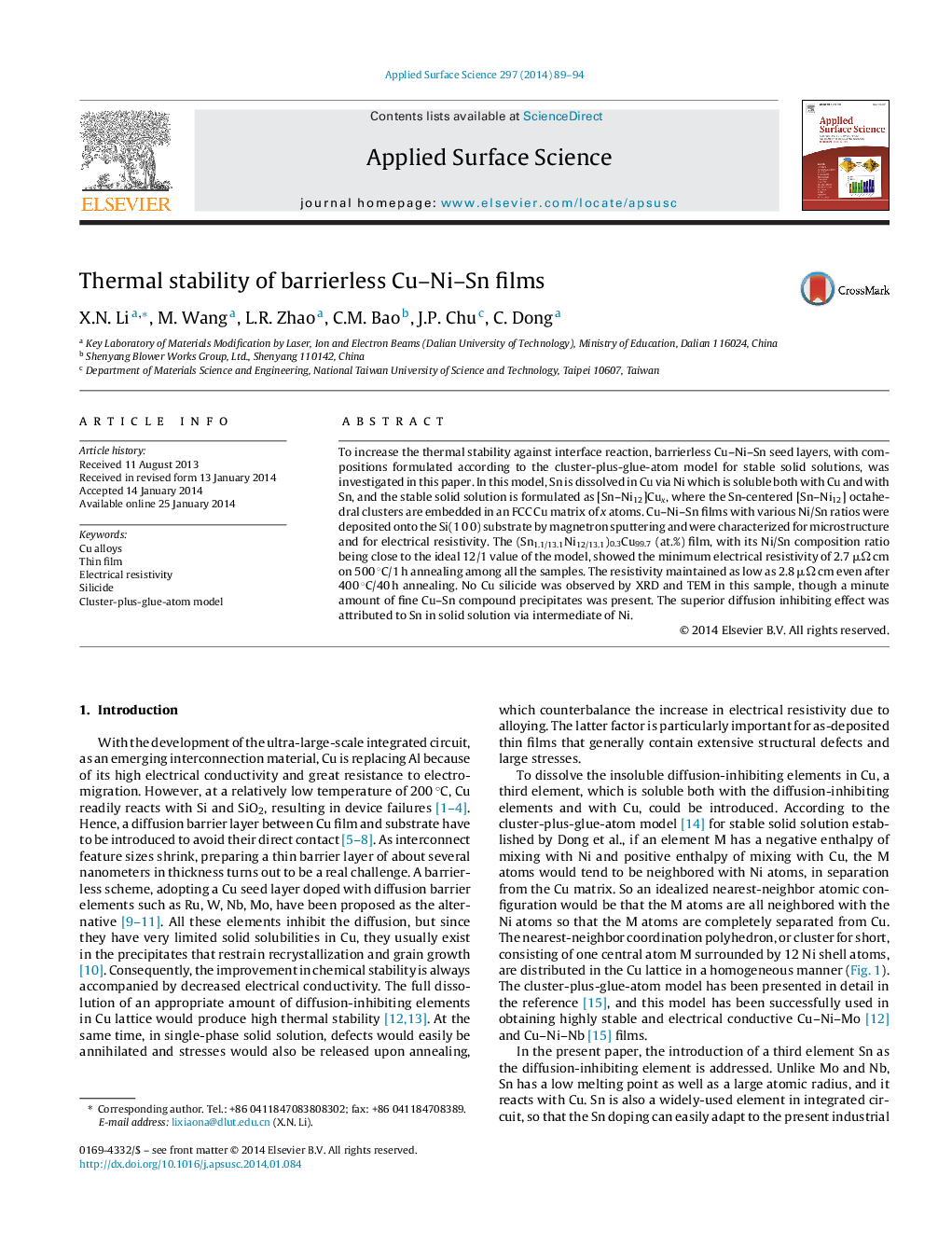| Article ID | Journal | Published Year | Pages | File Type |
|---|---|---|---|---|
| 5351235 | Applied Surface Science | 2014 | 6 Pages |
Abstract
To increase the thermal stability against interface reaction, barrierless Cu-Ni-Sn seed layers, with compositions formulated according to the cluster-plus-glue-atom model for stable solid solutions, was investigated in this paper. In this model, Sn is dissolved in Cu via Ni which is soluble both with Cu and with Sn, and the stable solid solution is formulated as [Sn-Ni12]Cux, where the Sn-centered [Sn-Ni12] octahedral clusters are embedded in an FCC Cu matrix of x atoms. Cu-Ni-Sn films with various Ni/Sn ratios were deposited onto the Si(1 0 0) substrate by magnetron sputtering and were characterized for microstructure and for electrical resistivity. The (Sn1.1/13.1Ni12/13.1)0.3Cu99.7 (at.%) film, with its Ni/Sn composition ratio being close to the ideal 12/1 value of the model, showed the minimum electrical resistivity of 2.7 μΩ cm on 500 °C/1 h annealing among all the samples. The resistivity maintained as low as 2.8 μΩ cm even after 400 °C/40 h annealing. No Cu silicide was observed by XRD and TEM in this sample, though a minute amount of fine Cu-Sn compound precipitates was present. The superior diffusion inhibiting effect was attributed to Sn in solid solution via intermediate of Ni.
Related Topics
Physical Sciences and Engineering
Chemistry
Physical and Theoretical Chemistry
Authors
X.N. Li, M. Wang, L.R. Zhao, C.M. Bao, J.P. Chu, C. Dong,
